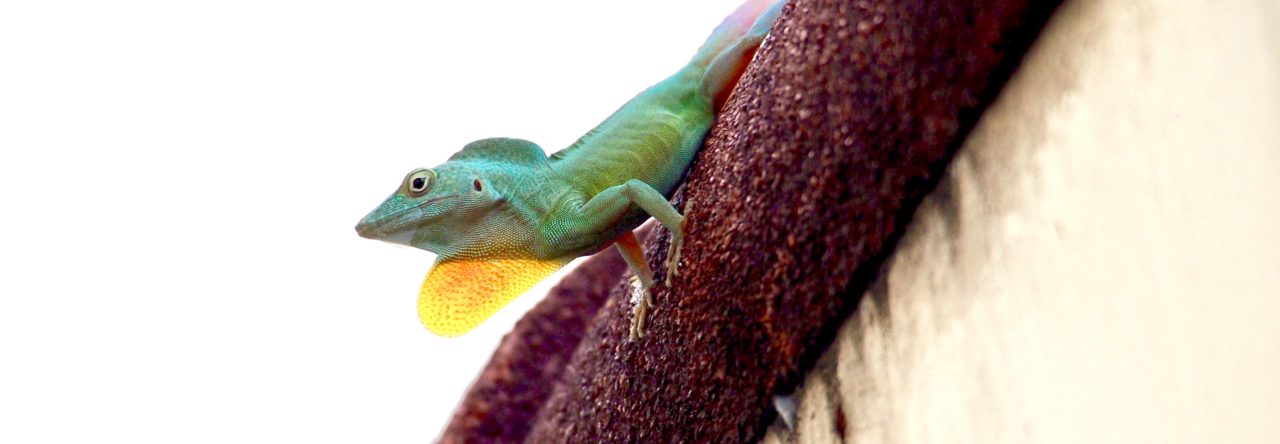Could a lizard stowaway on a succulent?
We hear a lot about invasive anoles–A. sagrei and others–showing up all over the place: Singapore, Taiwan, you name it. But how do they get there? I was recently reminded of an article by Gad Perry and colleagues in the journal Iguana (now Reptiles and Amphibians: Conservation and Natural History–a quarterly journal available online and worth a look). Perry et al. examined a barge delivering a large number of potted plants to the small island of Guana in the British Virgin Islands. The plants came initially from Florida, but had been sitting in a nursery on a nearby island for at least ten days. What would they contain?
To find out, the investigators laboriously inspected the plants, all 220+ of them, one by one. And sure enough, there were stowaways: six juvenile Puerto Rican crested anoles (A. cristatellus); a dwarf gecko, Sphaerodactylus macrolepis; also, an immature spider, three snails and nests of the red fire ant. In addition, the barge carrying the cargo contained two other lizards, Ameiva exsul.
And remember, this is one just one shipment. Now, in this case, all of the lizards were natives, as were most of the invertebrates. But imagine all of the plants being shipped out from Florida, containing brown anoles, Cuban treefrogs, and who knows what else? My prediction: it’s just a matter of time before brown anoles are everywhere in the urban tropical world.











